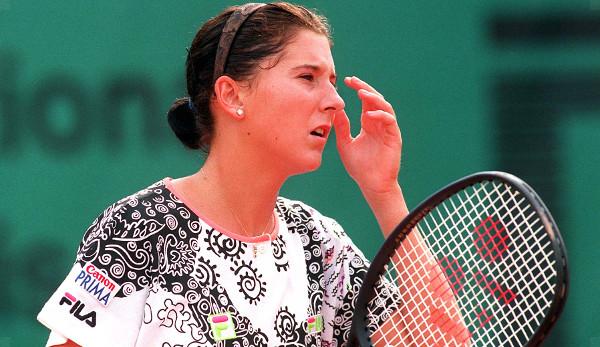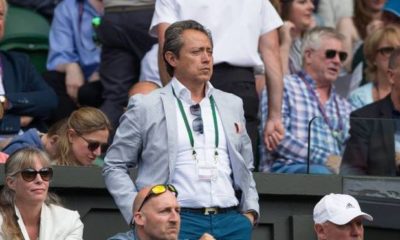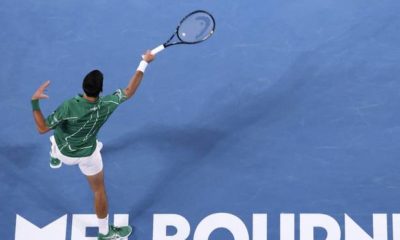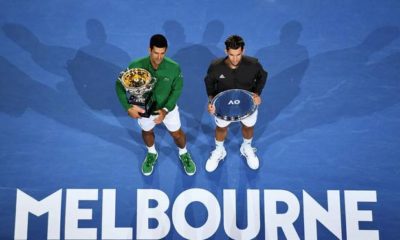On April 30, 1993 Günter Parche stabbed Monica Seles in the back at the tennis tournament in Hamburg. The assassination left a wound that will never heal.
When Günter Parche entered the tennis court at Rothenbaum in Hamburg on April 30, 1993 with a plastic bag in his hand, he was afraid. The unemployed turner from Görsbach in Thuringia, however, is not worried about the controls at the entrance on Hallerstrasse. He is not worried that the folders might discover the boning knife in his pocket and have him arrested. Parche fears to slip on the red ashes of the Center Court – and to fail.
So he decides to stab Monica Seles in the back. An attack from behind, in a safe position in the stands, and his star is back at the front. An assassination attempt for Steffi Graf – Parche had planned it.
On this Friday afternoon Seles is not playing her best tennis and is still on her way to the next round. In the quarter-finals of the WTA tournament the world number one from Yugoslavia leads 6-4, 4-3 against Magdalena Maleeva, it could be the last turn of the match. “The break in such a game usually lasts about a minute, so I had to hurry,” Parche later reports to the State Criminal Police Office. He strikes with both hands.
Günter Parche has worked on his plan for a long time, he quickly puts it into action. A sting between the spine and shoulder blade and Parche’s dreams become reality. But fortunately the knife “only” penetrates two centimetres deep into the back, Seles had just bent forward. Yet Parche Monica Seles inflicts a wound that never heals and helps his queen back on the tennis throne.
While binders and spectators wrestle parche to the ground, Seles hears a sharp scream, gets up and staggers to the net. Seles grabs her back, sees the blood on her hand, but does not realize what has happened. Her thoughts raced in the ambulance, “and again and again the word’stabbed’ came to my mind,” Seles recalls: “I had never used that word before and never thought of it.
Seles is 19 years old and on his way to break all previous records. She triumphed seven times in the last nine Grand Slams. Seles has long since become the dominant player on the tour; she has replaced Steffi Graf. The Serbo-Croatian with Hungarian roots, who grew up in Nick Bollettieri’s academy, was already the prototype of today’s generation of players back then: powerful, aggressive, offensive and hardly vulnerable until April 30, 1993.
“I couldn’t bear the thought that anyone could beat Steffi Graf,” says Parche during his interrogation: “For me Steffi is the top woman. Her eyes shine like diamonds. She’s an absolute dream woman.” For him it was “almost like the love of God”. The psychiatric report diagnoses Parche as “an unreal idealization with probably unconscious sexual elements and a fanaticism that went as far as self-sacrifice.
Parche is counting on going to prison for what he did. As a precaution, he takes the count posters from the walls of the small room in his aunt’s house so that they are not damaged in his absence. However, the judicial authorities in Hamburg do not condemn him for attempted manslaughter, but for dangerous bodily injury. Parche gets further cracks in Seles’ world view: “I can’t understand why this man didn’t have to atone for what he did.”
Steffi Graf, who visits Seles in hospital two days after the assassination and cries silent tears with her rival, also expresses her “total incomprehension” for the verdict: “How can a man who, under whatever circumstances, has endangered a human life, leave the courtroom in freedom”? The international press is also critical, but Parche remains at large even after the appeal hearing.
“I was stabbed on the tennis court in front of ten thousand people. It is not possible to talk about it in a distanced way,” writes Seles in the 2009 biography “Immer wieder aufstehen”: “It changed my career irrevocably and damaged my soul. A split second made me a different person.” The external wound heals quickly, yet it still takes years before the once tough fighter returns to the tennis court with the two-handed drive. Parche had reached his destination.
Seles celebrated another Grand Slam victory at the 1996 Australian Open, but her life has fallen apart. Again and again she flees in feeding attacks and gains up to 30 kilograms until she finally ends her career in 2008.
Today, 25 years after the assassination in Hamburg, Seles is back in life, has written books and finished with tennis. She is married to the 32-year-old American billionaire Tom Golisano. Her eating disorders have overcome her.
Günter Parche has retired after several strokes and is incapacitated in a retirement home in Thuringia.














You must be logged in to post a comment Login